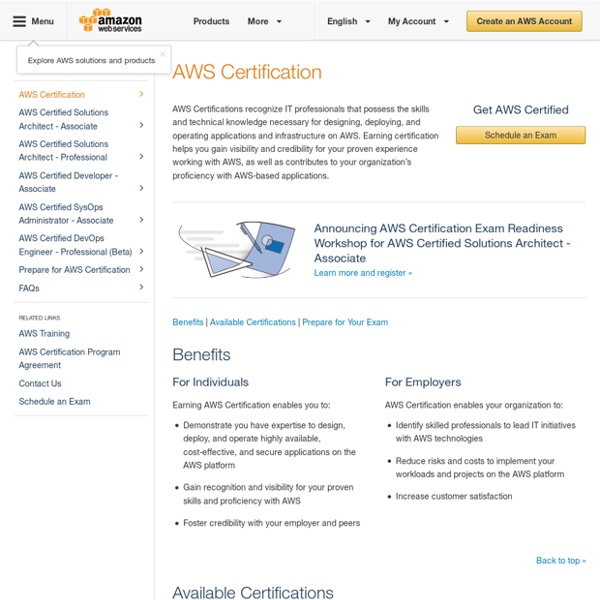



Kirkpatrick Partners, The One and Only Kirkpatrick Company® Architecture Center The AWS Architecture Center is designed to provide you with the necessary guidance and best practices to build highly scalable and reliable applications in the AWS Cloud. These resources will help you understand the AWS platform, its services and features, and will provide architectural guidance for design and implementation of systems that run on the AWS infrastructure. Amazon Web Services provides a comprehensive set of services and tools for deploying Microsoft Windows-based workloads on its reliable and secure cloud infrastructure. The flexibility of AWS allows you to design your application architectures the way you like. The cloud reinforces some old concepts of building highly scalable Internet architectures and introduces some new concepts that entirely change the way applications are built and deployed. In the event of a disaster, you can quickly launch resources in Amazon Web Services (AWS) to ensure business continuity.
Business plan StartMyStory Diving into OpenStack Network Architecture - Part 1 (Ronen Kofman's Blog) OpenStack networking has very powerful capabilities but at the same time it is quite complicated. In this blog series we will review an existing OpenStack setup using the Oracle OpenStack Tech Preview and explain the different network components through use cases and examples. The goal is to show how the different pieces come together and provide a bigger picture view of the network architecture in OpenStack. This can be very helpful to users making their first steps in OpenStack or anyone wishes to understand how networking works in this environment. We will go through the basics first and build the examples as we go. According to the recent Icehouse user survey and the one before it, Neutron with Open vSwitch plug-in is the most widely used network setup both in production and in POCs (in terms of number of customers) and so in this blog series we will analyze this specific OpenStack networking setup. # ovs-vsctl show 7ec51567-ab42-49e8-906d-b854309c9edf Bridge br-int Port br-int tag: 1
The Role of the Cloud Architect Right! And with the movement towards cloud different public cloud providers have different offerings. For example, the product I lead at ATT is called Cloud Architect, and we also offer bare metal computing without a hypervisor. Amazon's public cloud, for example, is built on Xen. So it looks almost like a workload provisioning method, to where now you have an application or you have a large environment and you have to choose. Assuming there's a decision of public cloud, private cloud, hybrid cloud, in that case, it almost seems like there has to be a workload rationalization effort that says, for a big data application, the big data appliance really works well for me. So as infrastructure architects, as you say, we have to up our game.
Japanese Researchers Target HPC Cloud Barriers The National Institute of Advanced Industrial Science and Technology (AIST) has developed a technology to enable users to spin up a virtual HPC cluster on top of any cloud-based infrastructure. The impetus for the project was two-fold: 1. To allow a personalized high-performance computer to be created on-demand 2. In high-performance computing, clustering tools connect many computers so they can run as a single computer, yet often the hardware configuration is not uniform. Using the “Build Once, Run Everywhere” concept, once the environment to run the application has been established it may be run on any cloud, private or public. For this experiment, AIST verified that the technology did indeed operate on both its private cloud, AIST Super Green Cloud (ASGC), as well as the Amazon EC2 infrastructure. “With this technology, users and application fields that could not use high-performance computing previously can now use high-performance computing,” notes AIST.